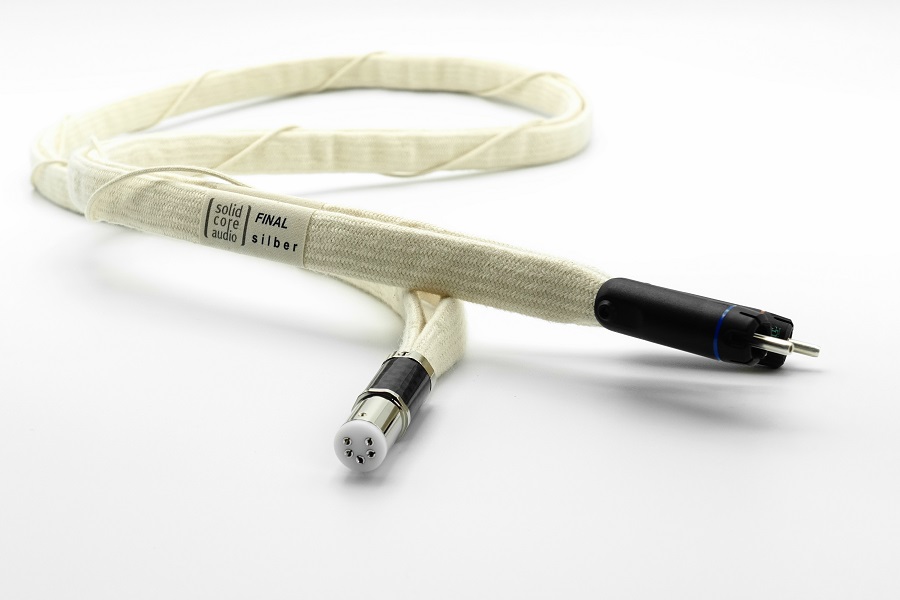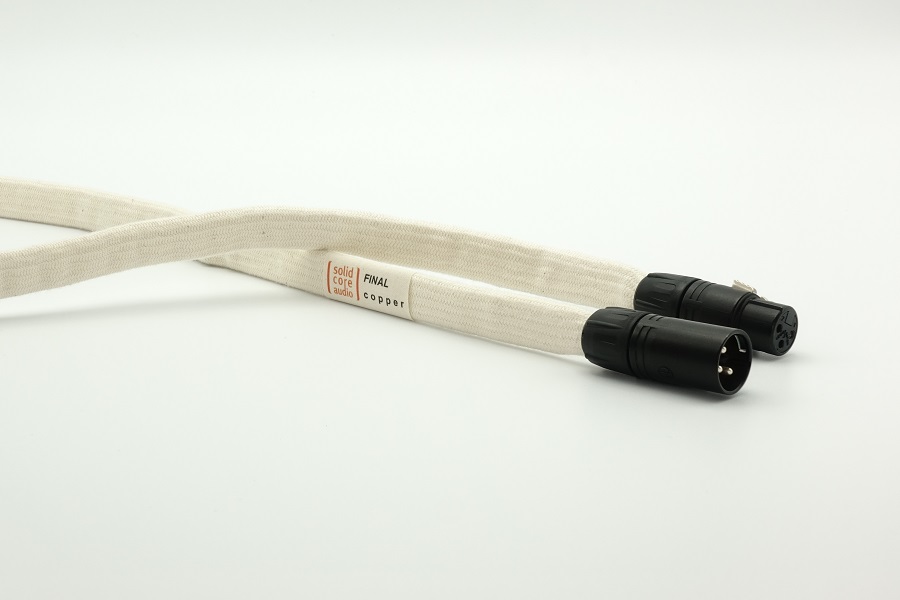Audio Interconnect
Review in the Hoererlebnis Nr. 118 (german only)
Review in the Hoererlebnis Nr. 125 (german only)
Foil Interconnects
It is easy to recognize, that I love metal foil conductor. Foil (aka ribbon) as conductor has superior signal transmission properties compared to any other conductor geometry.
dynamics, ease, punch, rythm, timbre, holographic soundstage, sovereignty
Derived from the design of my speaker cable emerged my interconnect that uses foils that are piggybacked. This cable has - compared to other ribbon cables - a rather low capacitance. That means that you can also use it with weak or passive sources.
Copper versus Silver
Copper is the second best conductor on earth. Silver is an even better conductor. However, silver is eavesdropped with prejudices by the audiophile audience. Some say it has harsh trebles and a thin sound. This has at least two reasons. First a non proper dielectric of the cable can lead to this effect. Secondly small errors in the audio system are transmitted better with silver. Copper is more likely to tolerate these errors. Is your chain ready for silver? Trial and error is the way to go. I will be happy to advise you! Feel free to order an identical trial set in copper and silver.
Shielding?
I strictly do not use shielding. Shielded interconnects are absolutely needless and counterproductive! It is necessary to understand that the electromagnetic wave is not only transported in the dielectric (between the conductors) but also in metal that is close to it (e.g. shielding). In metal though the wave has completely different (and frequency-dependend) propagation characteristics.
In addition, the following is true: no current without a magnetic field! Even if the currents in a signal cable are small, they will generate a magnetic field. This will generate eddy currents in the nearby shielding braid according to the law of induction. The energy required for this is extracted from the fine music signal.
Single-Ground- and Zero-Ground-Topology
Every standard RCA interconnect set has two ground wires. Thus, this cable forms a(nother) ground loop! If you think now that, if you don't hear any hum everything is fine, you are wrong! My RCA interconnect has only one ground conductor for both channels. Left and right channels are packed piggyback. A stereo set is consequently only "one" cable. An even blacker background and more resolution and soundstage are the results.
For those who have mono-block amplifiers of course will get two seperate cables.
Also the phono interconnect consists of two cables. Here we deal with a symmetric signal that comes from the pick-up generator.
My XLR interconnect has no ground conductor at all! The signal is symmetrically and has no reference to common ground. This has the nice side effect, that there is no ground loop at all.
Final
In the Final version you can choose between the superb RCA plugs from WBT nextgen or KLEI Harmony Plugs. With the copper version comes the WBT 0110 Cu nextgen PlasmaProtect or the KLEI Pure Harmony. With the silver version I use the WBT 0110 Ag nextgen or the KLEI Absolute Harmony.
For the Phono cable I use the Furutech FP-Din phono connector or any other termination you like.
The XLR cable comes standard with the very good Neutrik NC3-Fx/-Mx or, for an additional charge (also for RCA) with outstanding connectors from Furutech.
MFC: Magnetic Force Controlled©
Magnetic forces act on every pair of conductors through which current flows. No matter whether the current flows in the opposite direction or in the same direction. Multi-stranded conductors will not interest the interested reader at this point, so we will stay with the classic solid-core cable with forward and return conductors: these repel each other when current flows. A vibration of the conductors is the result. However, additional vibrations are rather undesirable in high-end audio.
With a certain arrangement of the conductors, these magnetic forces cancel each other out almost completely. The result is amazing. Caution: Danger of addiction!
MFC© are only available with screw-type connectors for technical reasons.
For Copper, I use Furutech's FT-111 for RCA and ETI Nexus for XLR.
For Silver, I use Furutech's CF-102 NCF for RCA and CF-601/602 NCF for XLR.
- 4N foil conductor
- copper or silver foil
- highly glossy foil surface for enhanced signal fidelity
- foil and plugs cryo-treated
- Single-Ground Conductor with the Final RCA
- Zero-Ground Conductor with the XLR
- (almost) no magnetic forces inside the cable MFC©-cable
- resonance-enhanced with C37-varnish
- protected against structure borne noise by lots of cotton




